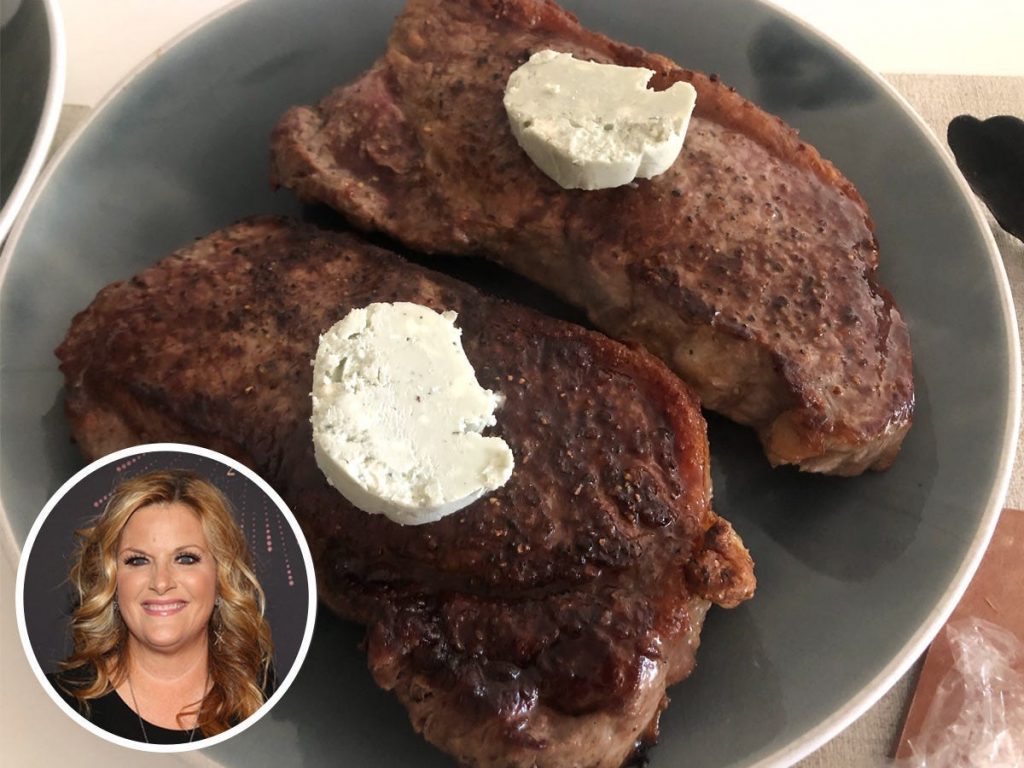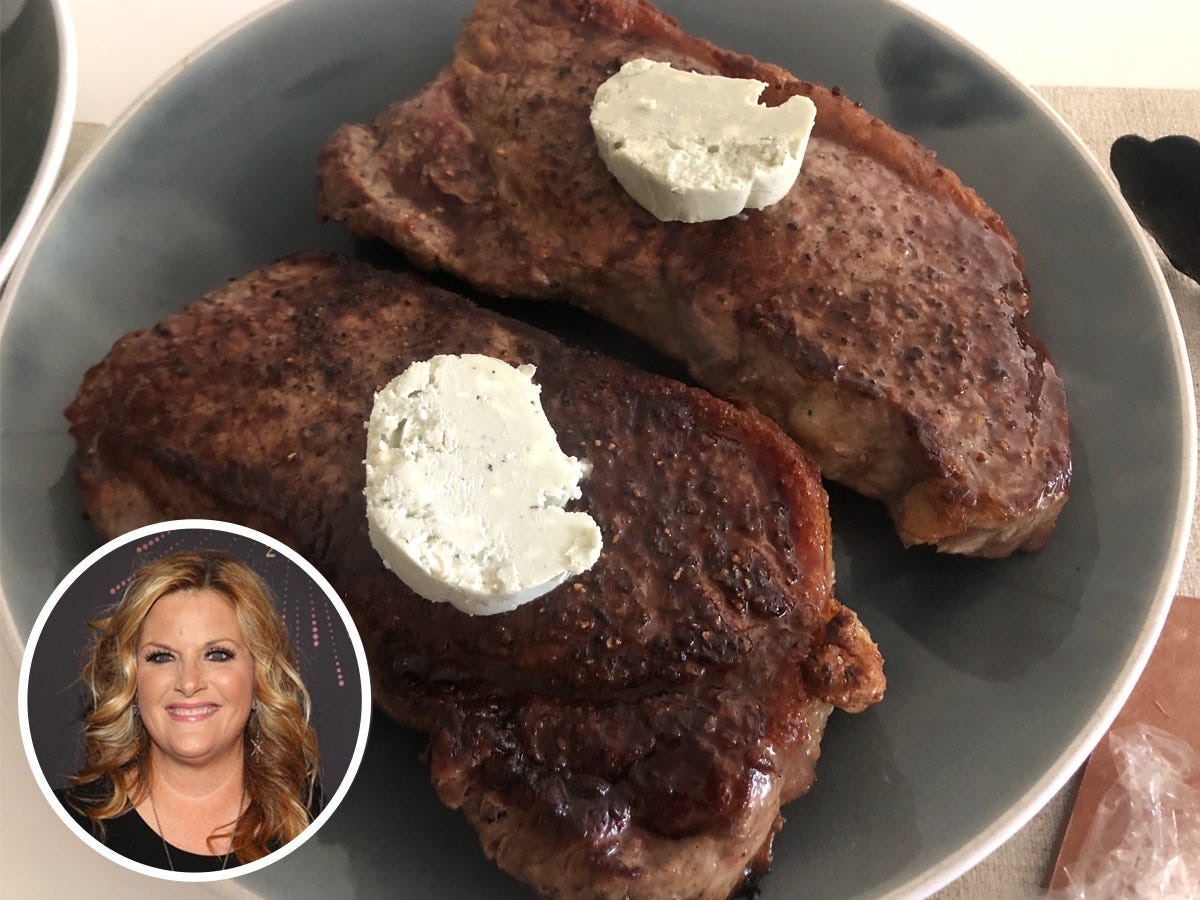
Terry Wyatt/Getty; Tiffany Leigh
- A well-done steak is hard to pull off, but I challenged myself to make Trisha Yearwood's recipe.
- Her method was simple but the steaks came out chewy and the cheesy butter made them juicier.
- I didn't love the texture and flavor so I won't make this again considering how expensive steak is.
- Visit Insider's homepage for more stories.
A well-done steak can stir up controversy because it can often end up dry and flavorless.
But celebrity chef Trisha Yearwood's well-done steak recipe with blue-cheese butter piqued my interest and I decided to give it a try.
Here's how the buttery steak turned out:
I started by making Yearwood's cheese-filled compound butter
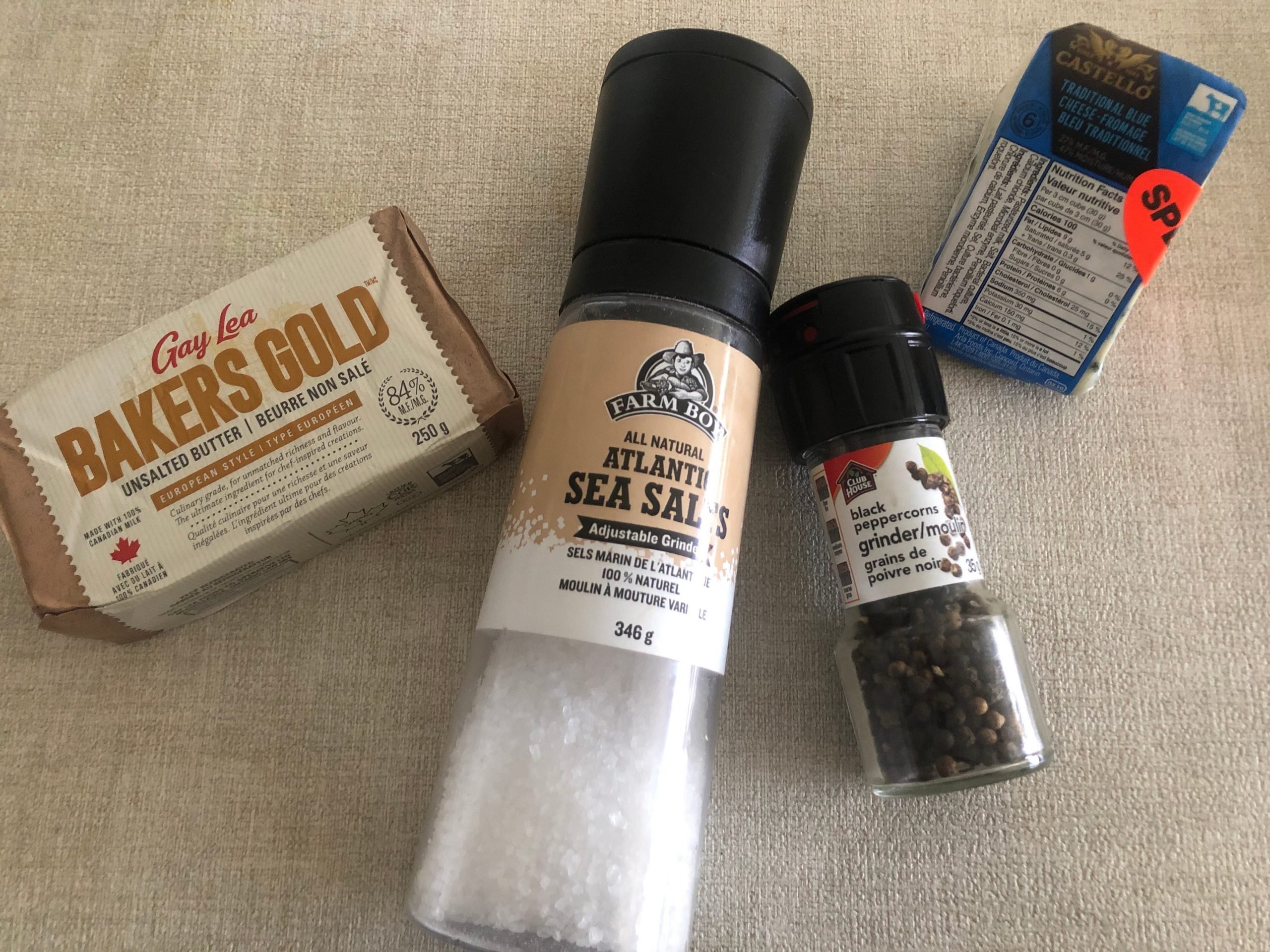
Tiffany Leigh
The butter only called for blue cheese, butter, salt, and pepper.
The recipe suggests a food processor but I whisked my ingredients together in a medium-sized bowl because I didn't have one.
I also cut the ingredient measurements in half since this meal was for two.
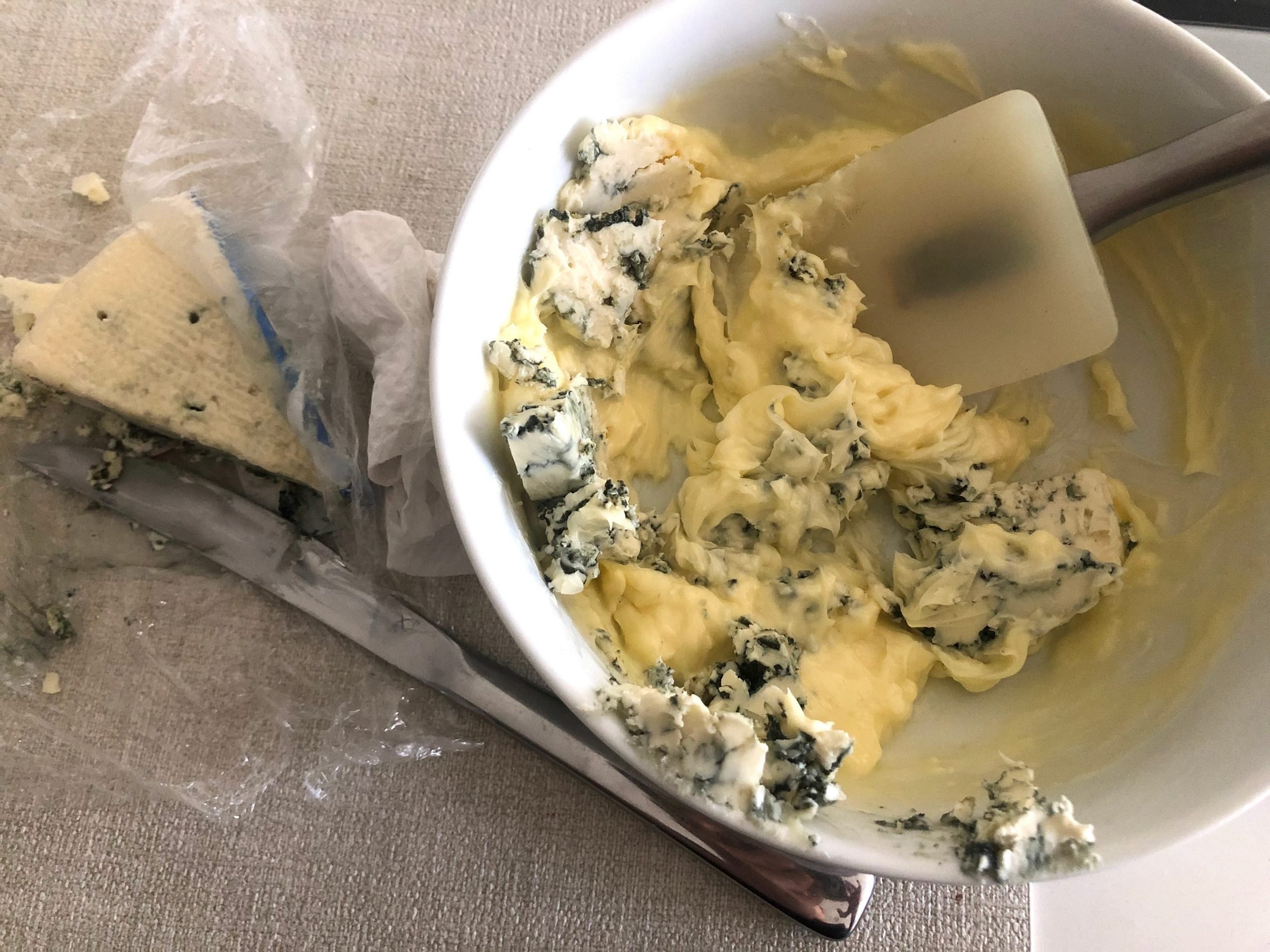
Tiffany Leigh
It took a bit of elbow grease to combine the cheese with the butter. I then added salt and pepper.
At this point, the butter didn't look very appetizing
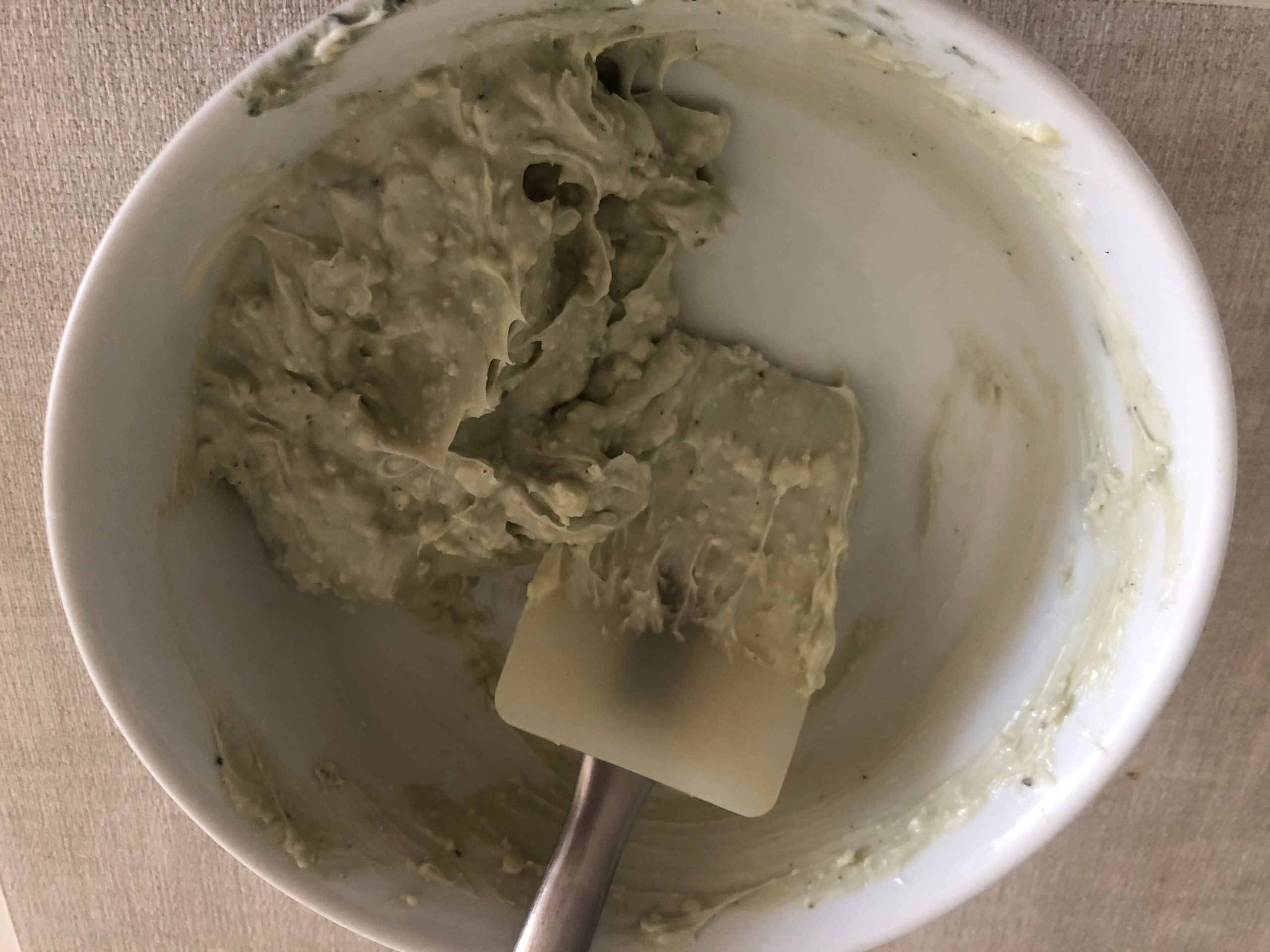
Tiffany Leigh
The blue cheese gave the mixture a swampy hue. The texture was also very thick, akin to moldable clay. Fortunately, the pungent odor of the cheese was tempered by the sweet and creamy butter.
I mounded the mixture onto a piece of plastic wrap, rolled it into a cylinder, then placed it in the freezer.
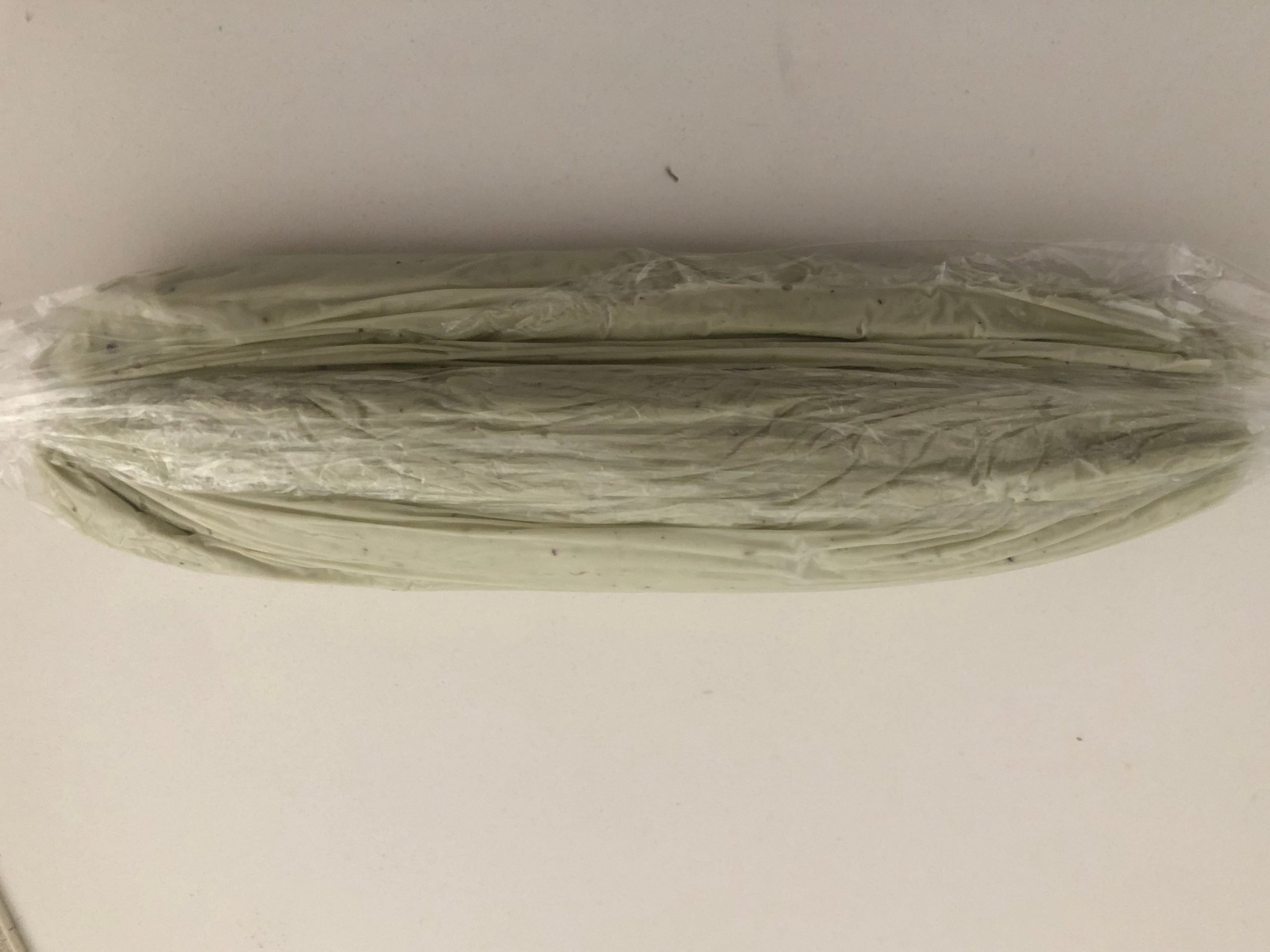
Tiffany Leigh
The recipe did not specify how long to let it freeze or when to take it out.
I made an educated guess based on other recipes I found and left it to chill for about an hour. I figured this would give it ample time to firm up and let the flavors meld together.
To prepare the steaks, I preheated the oven to 450 degrees Fahrenheit
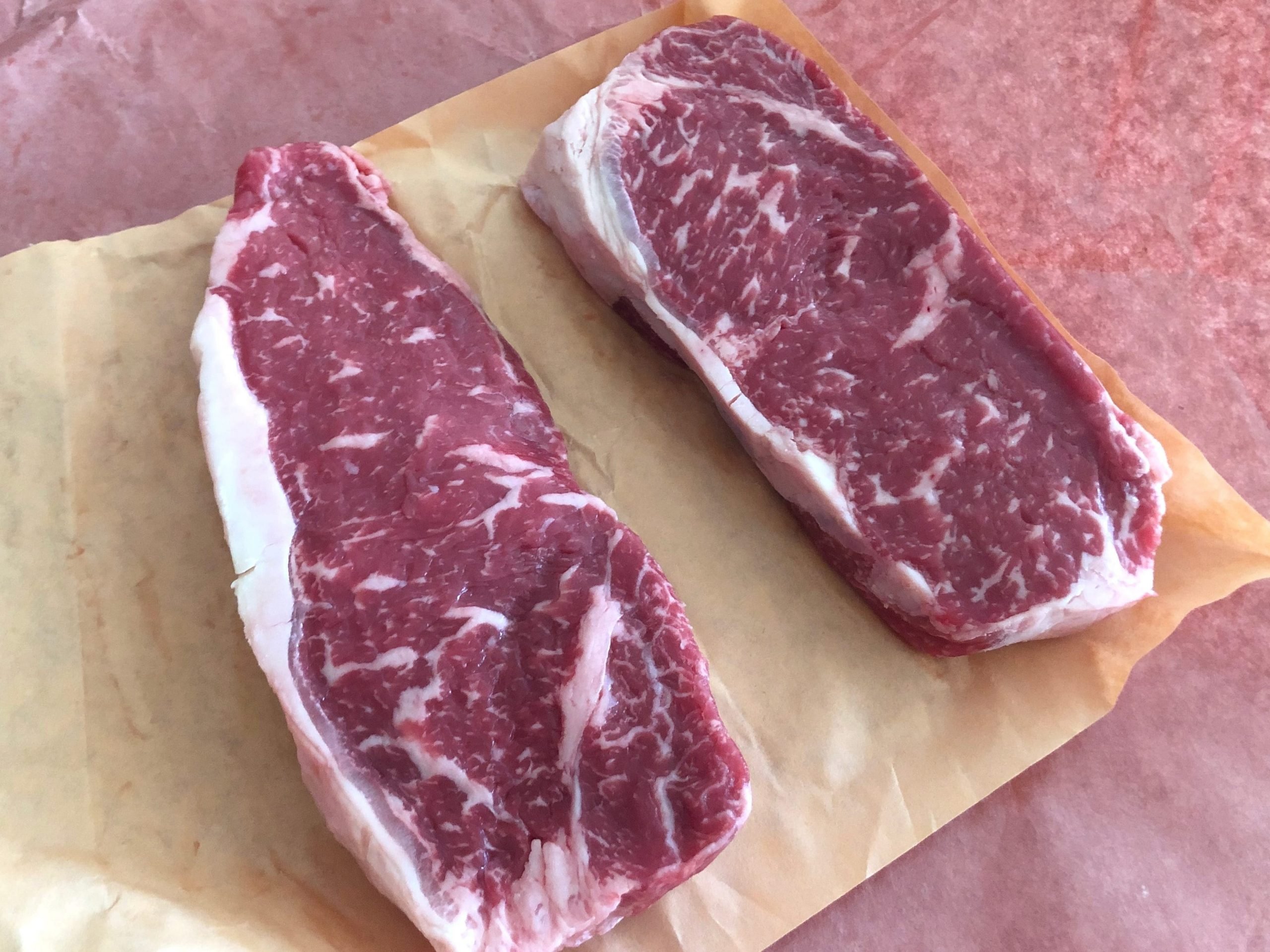
Tiffany Leigh
At this point, I decided to take the butter out and let it thaw a bit.
Yearwood's recipe called for New York strip steaks. After chatting with my local butcher, he advised that I choose ones with heavy marbleization or strips with more intramuscular fat.
"Since you're cooking the steaks well-done, the fat will help retain the meat's tenderness and prevent it from completely drying out," he explained.
The method for cooking the steaks was straightforward, but I kept a close eye on my meat
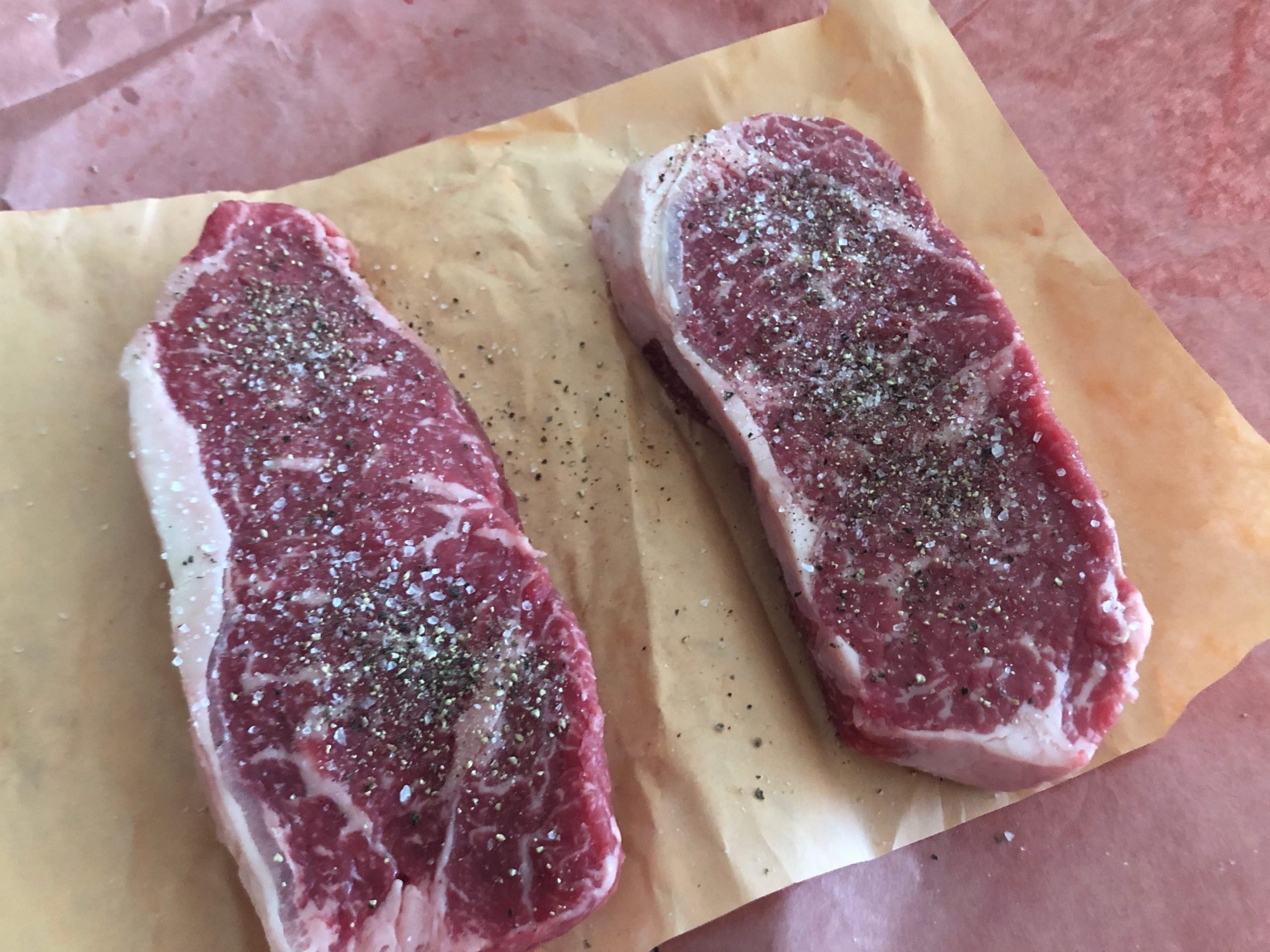
Tiffany Leigh
Yearwood didn't suggest doing so, but I patted down my meat with a paper towel to remove excess moisture. This helps the steaks get a beautiful golden-brown sear and prevents excessive steam.
I then placed my cast-iron skillet over medium-high heat. I waited until the pan began to smoke and added a splash of vegetable oil, then my meat.
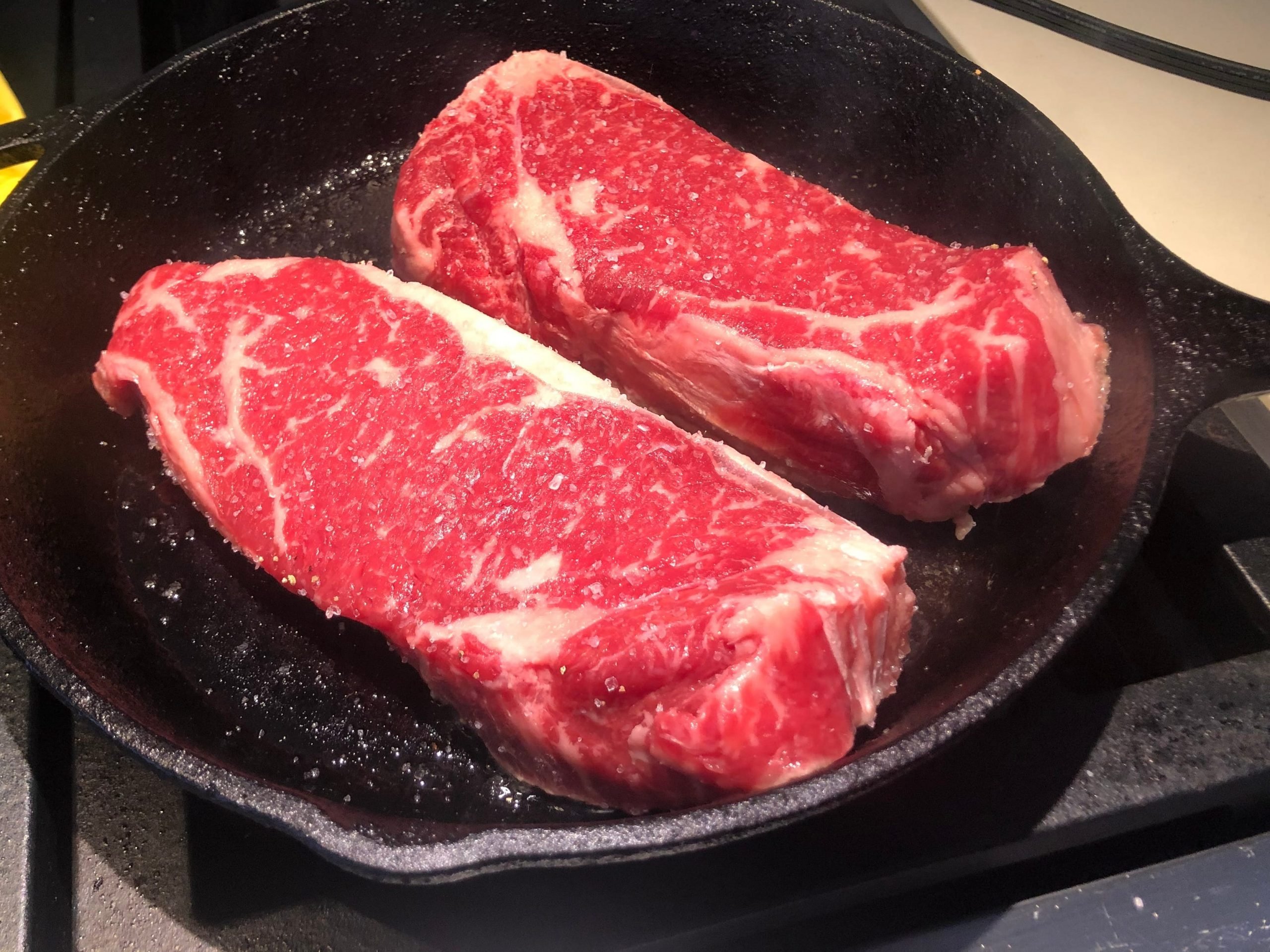
Tiffany Leigh
Yearwood suggests searing the meat on both sides and finishing it in a hot but recently turned off oven. This way, the residual heat would finish the cooking process.
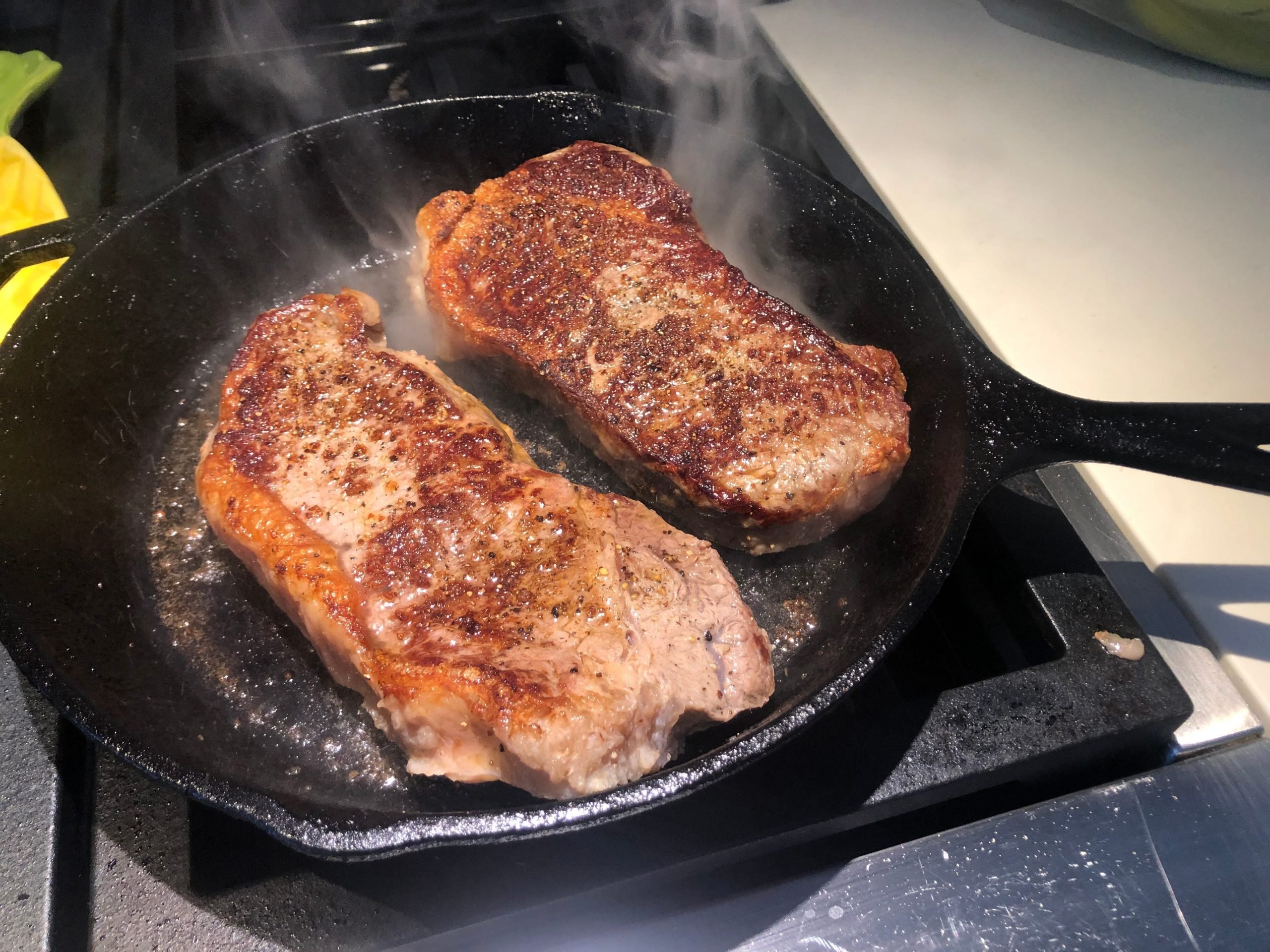
Tiffany Leigh
But I got a little stressed reading the comments on this recipe. Some expressed disappointment because they couldn't fathom how any well-done steak could be juicy.
Plus the steaks were not cheap at $50 for two pieces, so I cautiously cut down the sear and oven times.
Instead of eight minutes in the pan, I finished the steaks for six and a half minutes in the oven.
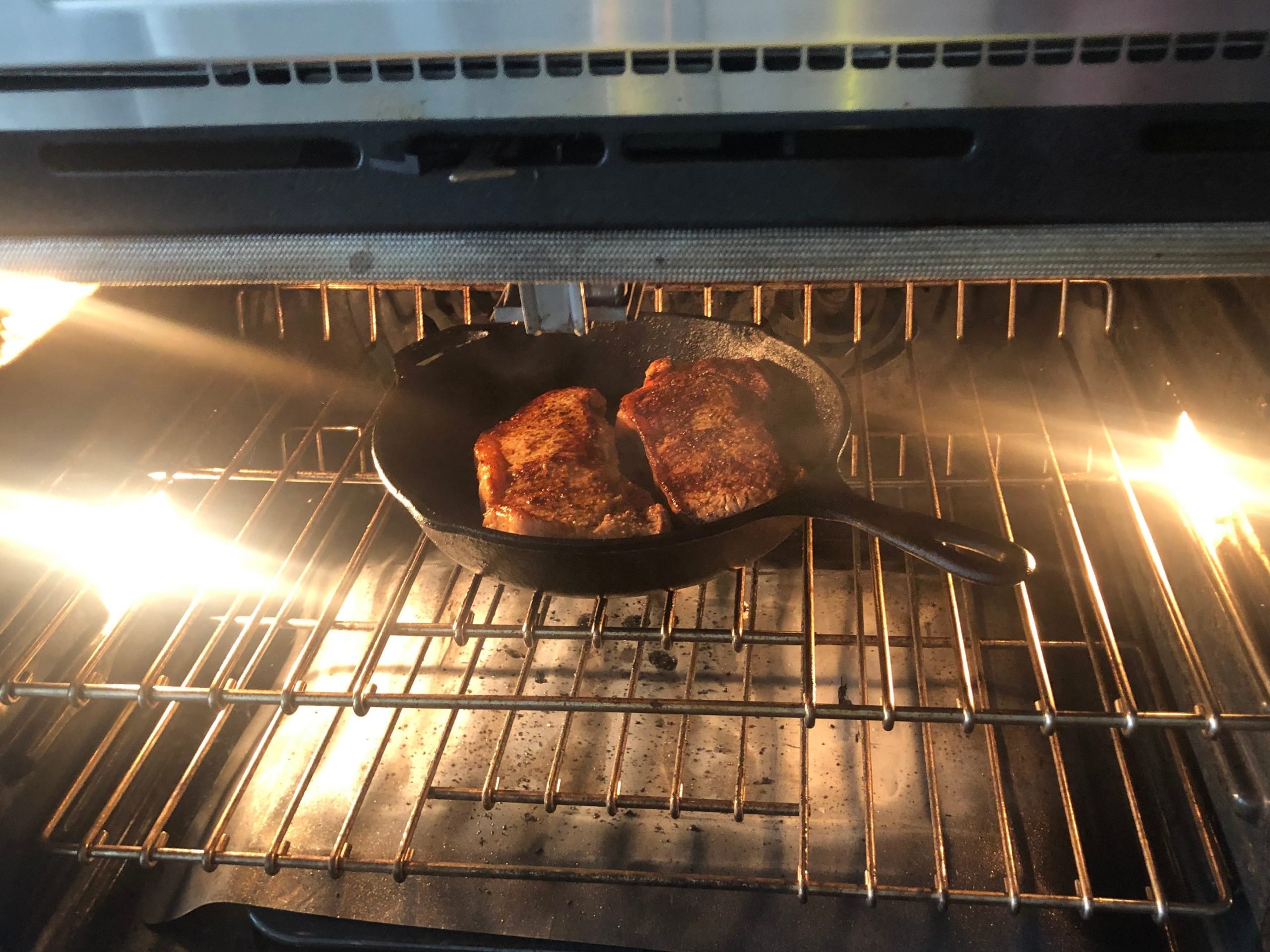
Tiffany Leigh
Ultimately, I was happy that I trusted my instincts.
The meat felt firm. When I probed them with a thermometer, the steaks registered around 152 degrees Fahrenheit. As Yearwood predicted, the temperature would continue to rise while they rested for five minutes.
At this point, Yearwood said to place half a tablespoon of salted butter over the steaks. I thought this was overkill and instead skipped to putting a slice of compound butter on each steak.
Yearwood didn't specify how much to use, so I cut 3/4-inch slices and placed one on each strip.
After five minutes, the butter began to pool and create a thin film over the meat.
The steak was kind of grainy and the cheese was pungent
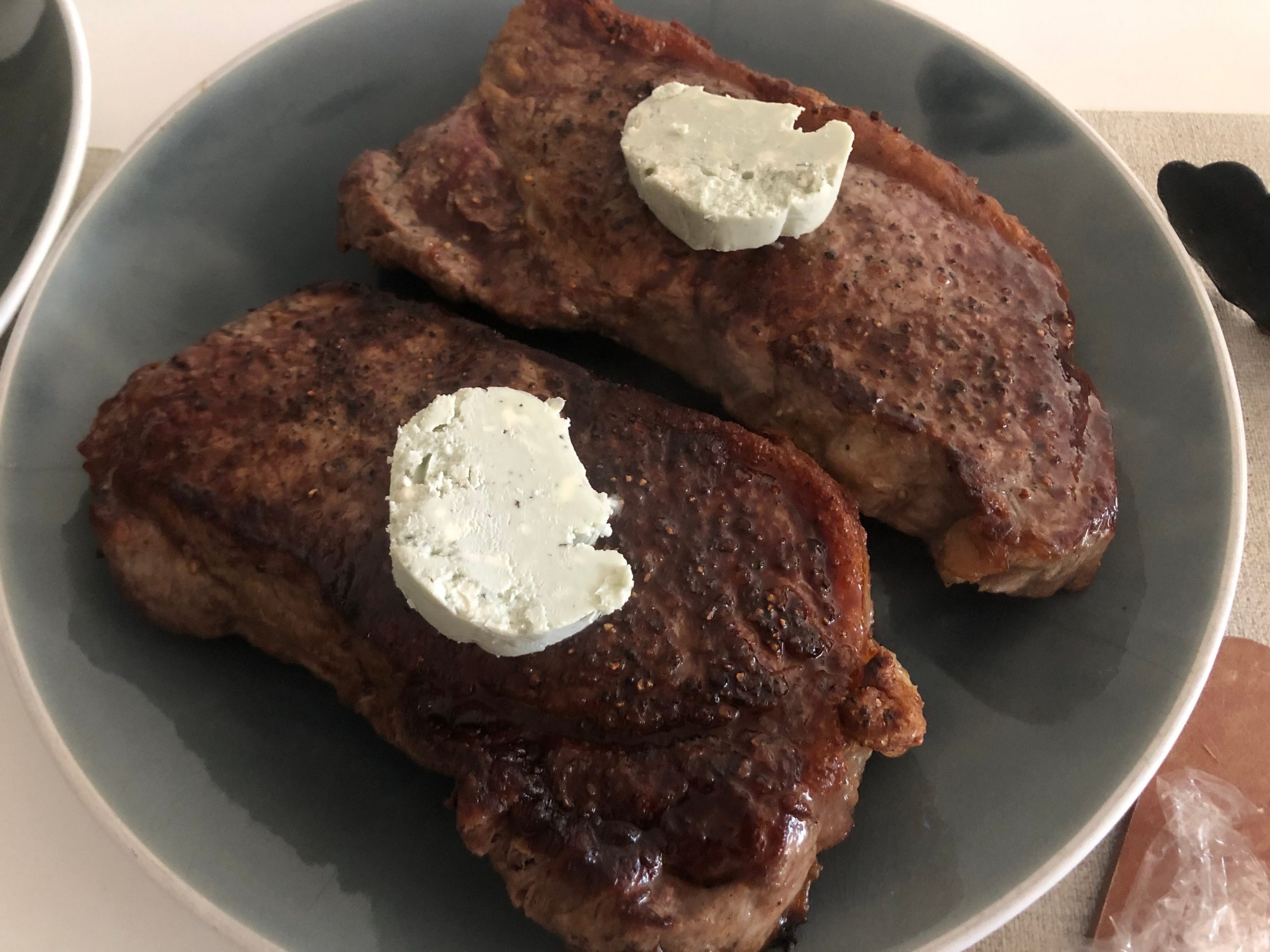
Tiffany Leigh
The first thing I noticed was the texture of the meat. It was grainier than the juicy medium-rare steak I was accustomed to eating. It wasn't dry, but it was chewy.
The meat was an unappealing blush color with a gray overlay, but this didn't distract me from the taste.
The powerful flavor from the blue cheese was followed by a sweetness thanks to the butter.
At first, I found the experience off-putting because there was a lot going on.
Interestingly, the more I ate the steak, the more I really appreciated how everything worked together. The steak got much-needed moisture from the butter, and the meat softened the flavor of the cheese.
This dish is not for the faint of heart, so I don't think I'll make it again
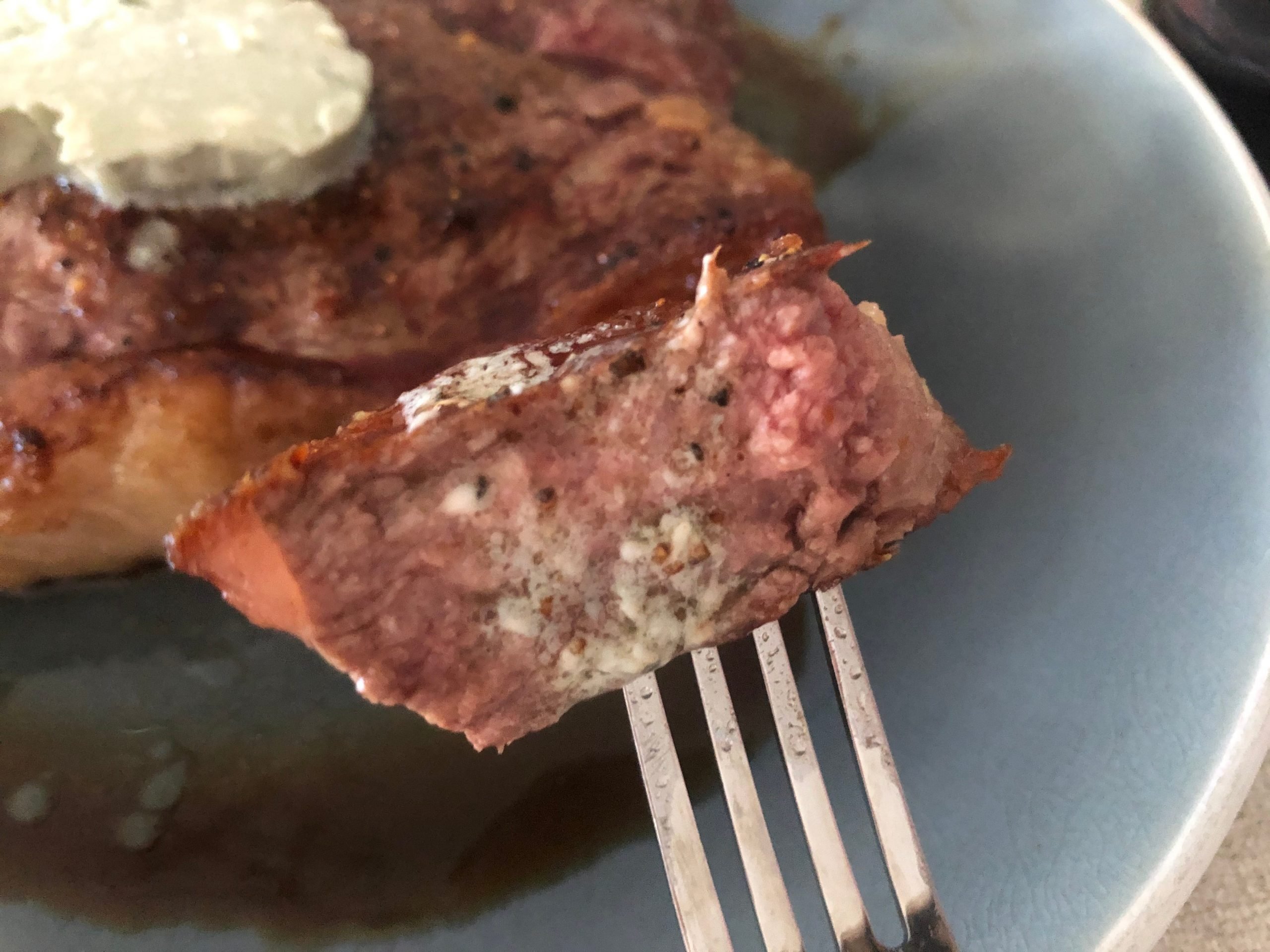
Tiffany Leigh
To enjoy this, you need to be open-minded about the pungent cheese and well-done texture.
Although I had a relative tolerance for this dish, my husband hated the taste of the stinky cheese and felt it overpowered the steak's flavor.
The leftover butter also went to waste because it was too strong to add to other dishes such as pasta, rice, or chicken.
Overall, considering that I would be the only one eating this in the future, I won't be making this recipe again unless I'm hosting a guest who loves blue cheese and well-done steak.
